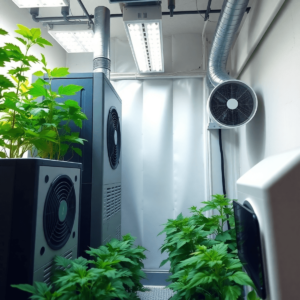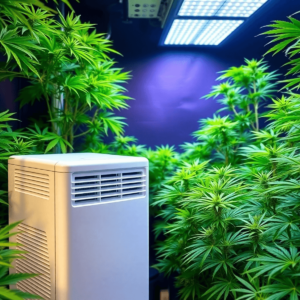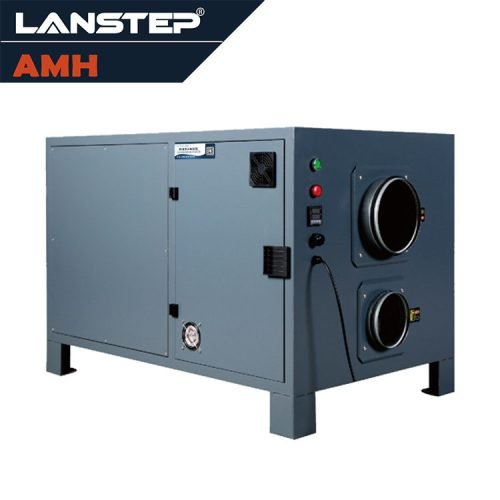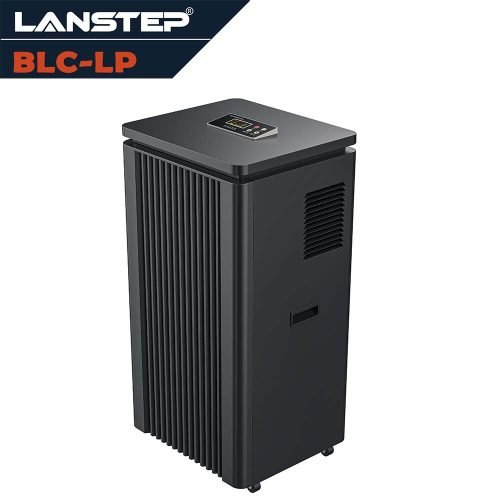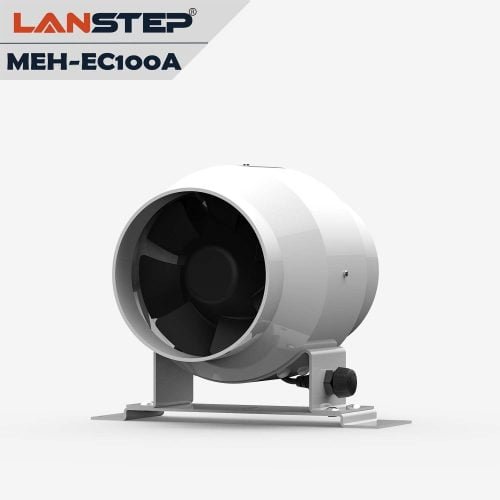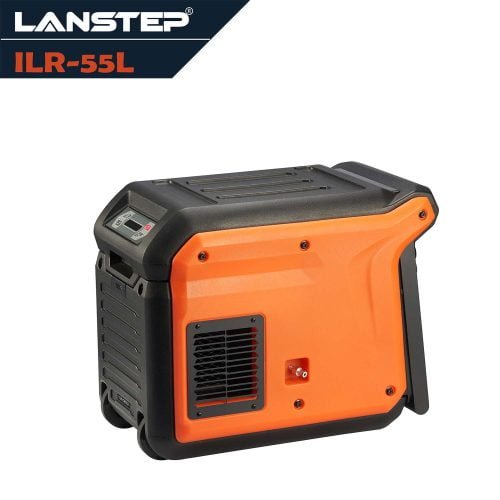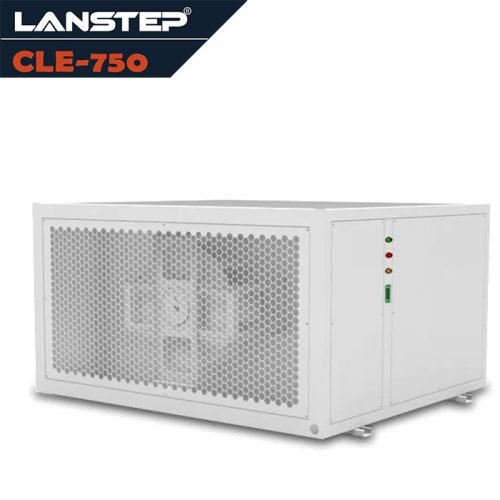Introduction
Effective humidity control is crucial in preserving valuable materials within archives and storage areas. When humidity levels are not properly regulated, archives can face significant risks such as mold growth, insect infestations, and the deterioration of organic materials like paper and leather.
Dehumidifiers play a crucial role in these environments, offering a reliable solution to maintain stable humidity conditions. By removing excess moisture from the air, dehumidifiers help protect archival items from the damaging effects of high humidity.
Maintaining ideal environmental conditions is not merely a preference but a necessity for safeguarding archival materials. Consistent humidity control ensures that both organic and inorganic materials remain intact over time, preserving their historical and cultural significance. Investing in proper humidity management solutions is essential for any institution or individual responsible for the care of archival collections.
Understanding Humidity and Its Effects on Archival Materials
Humidity plays a critical role in the preservation of archival materials. To grasp its impact, it is essential to understand the concepts of relative humidity and absolute humidity.
1. Relative Humidity (RH)
This refers to the percentage of moisture in the air relative to the maximum amount of moisture that air can hold at a specific temperature. It is a crucial factor in determining how comfortable or detrimental environmental conditions are for archival materials.
2. Absolute Humidity
This measures the actual amount of water vapor present in a given volume of air, regardless of temperature. Unlike relative humidity, it doesn’t depend on temperature, providing a more straightforward indication of moisture content.
Effects of High Humidity
High levels of relative humidity can be disastrous for archives:
- Mould Growth: When RH exceeds 60%, conditions become favorable for mould spores to germinate and grow. Mould can cause irreversible damage to paper, photographs, textiles, and other organic materials.
- Insect Pest Activity: A humid environment attracts pests like silverfish and booklice, which thrive in damp conditions and feed on paper and glue found in books and documents.
Impact of Low Humidity
While high humidity is harmful, low humidity also poses significant risks:
- Brittleness in Organic Materials: Materials such as paper, leather, and textiles require certain moisture levels to maintain their structural integrity. Low RH leads to desiccation, resulting in brittleness and cracking over time.
Maintaining optimal humidity levels is essential for preventing these adverse effects. Understanding these principles aids in selecting suitable strategies for preserving valuable collections within archives. The balance between too much and too little moisture is delicate yet crucial for long-term preservation success.
Ideal Humidity Levels for Storage in Archives
Effective temperature control in archives is essential to preserve the integrity of archival materials. For organic materials such as paper, leather, wood, and natural fibers, maintaining an environment with temperatures ranging from 13-20°C and relative humidity between 35-60% RH is crucial. This range not only safeguards these materials against becoming brittle or warped but also minimizes the risk of fungal growth and pest infestations.
In contrast, inorganic materials such as iron and steel present different challenges. The corrosion rate of these materials is closely related to humidity levels, thus requiring a more tailored approach during preservation. While the ideal humidity for inorganic items varies depending on their specific composition and storage conditions, keeping these items within the controlled environment helps mitigate potential damage.
Stability within a tight margin of +/-5% RH is vital for both organic and inorganic archival items. Fluctuations beyond this threshold can lead to irreversible damage like warping, cracking, or corrosion. Therefore, investing in reliable humidity control systems is indispensable for ensuring long-term preservation.
By adhering to these recommended environmental conditions, archives can significantly extend the lifespan of their collections. This highlights the importance of employing precise humidity regulation tools that adapt to specific needs while maintaining consistent conditions throughout storage areas.
Types of Dehumidifiers Used in Archives
1. Condensing Dehumidifiers
Condensing dehumidifiers are a popular choice in archival storage environments, particularly due to their operational efficiency and ability to maintain consistent humidity levels. Here’s why they are often favored:
- Operational Range: These dehumidifiers are designed to function effectively within a temperature range of 20-35°C, making them suitable for the controlled environments typically found in archives. They achieve a relative humidity (RH) range of 45-95%, which aligns well with the recommended conditions for preserving archival materials.
- Energy Efficiency: When compared to traditional heating methods, condensing dehumidifiers offer significant energy savings, sometimes up to 60%. This efficiency not only reduces operational costs but also minimizes the environmental impact of maintaining ideal storage conditions.
- Humidity Control Accuracy: While offering substantial energy savings, these units also provide accuracy in humidity control with a tolerance of +/-10% RH. This level of precision is crucial for preventing the damage that can occur from fluctuating humidity levels, ensuring that sensitive materials remain stable over time.
The ability of condensing dehumidifiers to balance energy efficiency with effective humidity control makes them a valuable tool in the fight against environmental deterioration of archival materials. Their ease of integration into existing HVAC systems without requiring major modifications further enhances their appeal for archive managers seeking practical solutions.
In essence, the strategic deployment of condensing dehumidifiers within archives and storage areas is a testament to their role in safeguarding historical documents and artifacts from the ravages of time and climate-related threats.
2. Desiccant Dehumidifiers
In the world of dehumidifiers and humidity control in archives and storage areas, both condensing and desiccant dehumidifiers are commonly used. However, desiccant dehumidifiers have special abilities that make them especially suitable for archival settings.
How Desiccant Dehumidifiers Work
Desiccant dehumidifiers work by using a material called a desiccant to absorb moisture from the air. The absorbed moisture is then removed from the desiccant through a heating process, allowing the dehumidifier to continue operating without large spikes in energy consumption.
This process not only helps maintain stable humidity levels but also offers energy efficiency benefits, making desiccant dehumidifiers an environmentally friendly choice for humidity control.
Key Features of Desiccant Dehumidifiers
Desiccant dehumidifiers have several key features that make them ideal for archival settings:
- Wide Temperature Range: Desiccant dehumidifiers can operate effectively in a wide temperature range, from -30 to +40°C. This flexibility makes them suitable for environments where temperature control is difficult or where specific conditions are required for archival materials.
- High Accuracy in Humidity Control: With a precision level of +/-2% RH or better, desiccant dehumidifiers provide precise management necessary for protecting sensitive archival materials. This ensures that even the most delicate items remain safe from fluctuations that could cause deterioration.
- Versatile Relative Humidity Range: Desiccant dehumidifiers can achieve a relative humidity (RH) range of 0-100%, offering the versatility needed for various preservation requirements.
Why Choose Desiccant Dehumidifiers?
Choosing the right type of dehumidifier is crucial for maintaining optimal conditions in archival storage spaces. Here are some reasons why desiccant dehumidifiers are a reliable solution:
- Designed for Cold Climates: The AMD Series desiccant dehumidifiers are specifically designed for cold climates, making them effective in environments where other types of dehumidifiers may struggle.
- Unique Heat Recovery Technology: These units are equipped with unique heat recovery technology that enhances energy efficiency, reducing operating costs while still providing effective humidity control.
- High-Capacity Units: Desiccant dehumidifiers offer high-capacity options, ensuring that valuable materials are preserved effectively over time.
Mini Desiccant Dehumidifier Options
In addition to larger desiccant dehumidifier models, there are also mini desiccant dehumidifier options available. These compact units utilize state-of-the-art desiccant technology, making them perfect for maintaining optimal humidity levels in various environments.
The lightweight and easy-to-install nature of mini desiccant dehumidifiers makes them versatile solutions for both residential and commercial spaces where space constraints or specific installation requirements exist.
Humidity Control Techniques for Effective Archive Preservation
1. Advanced Dehumidification Solutions
In the quest to maintain optimal conditions in archives and storage areas, advanced dehumidification solutions play a pivotal role. These systems are designed to provide precise control over humidity levels, ensuring the preservation of valuable archival materials.
Consulting Experts for Tailored Solutions
Engaging with experts in the field is crucial for crafting solutions that are tailored to specific archive environments. Each archive may present unique challenges based on its geographical location, architectural design, and types of materials stored. Professionals can assess these variables and recommend the most suitable dehumidification strategies to meet the specific needs of your collection.
Role of Resistive Element Steam Humidifiers
Among advanced systems, resistive element steam humidifiers stand out due to their ability to maintain humidity levels with high accuracy. These humidifiers operate with a control accuracy of +/-3% RH or better, making them ideal for environments where even slight deviations can lead to material degradation. By integrating such precise systems into your preservation strategy, you ensure that the environmental conditions remain within the desired parameters.
These advanced dehumidification solutions not only focus on maintaining stable humidity levels but also contribute significantly to energy efficiency. Unlike traditional heating methods that may consume excessive power without delivering precise results, modern dehumidifiers optimize energy consumption while achieving superior control over humidity.
For archives and storage areas, adopting these sophisticated techniques is essential in preserving the integrity of materials over time. By leveraging expert advice and utilizing cutting-edge technology like resistive element steam humidifiers, you place your preservation efforts on a foundation of reliability and efficiency.
Exploring these advanced methods opens new avenues for maintaining and enhancing archival preservation standards, safeguarding historical treasures for future generations.
2. Energy Efficiency Considerations in Archive Preservation with Dehumidifiers
Energy efficiency is a critical factor in the preservation process within archives and storage areas. Modern dehumidification solutions have shown to be more energy-efficient compared to traditional heating systems. Heating methods typically consume higher energy levels, often leading to increased operational costs while attempting to maintain optimal humidity conditions. In contrast, advanced dehumidifiers can offer up to 60% energy savings, making them a more sustainable choice.
Strategies to maximize energy efficiency include:
- Energy-Efficient Units: Select dehumidifiers that are designed for low energy consumption without compromising on performance.
- Regular Maintenance: Ensure routine maintenance and servicing of equipment to keep them running efficiently.
- Environmental Monitoring Systems: Implement smart sensors and monitoring devices that adjust humidity control based on real-time data, reducing unnecessary energy usage.
- Tailored Solutions: Consult with experts to design systems that specifically cater to the needs of your archive environment, ensuring you only use as much energy as necessary.
By integrating these strategies, you can achieve effective humidity control methods for archive preservation while also being mindful of energy consumption. This approach not only safeguards archival materials but also aligns with sustainability goals—a vital consideration for institutions today.
Best Practices for Selecting the Right Type of Dehumidifier Based on Specific Needs In Archives And Storage Areas
Maintaining optimal conditions in archival storage spaces is imperative. Implementing best practices for selecting the right type of dehumidifier based on specific needs in archives and storage areas can prevent irreversible damage to valuable materials. Here are some key practices:
1. Understand Material Sensitivity
Different materials require varied environmental conditions. Organic materials like paper and leather thrive at 13-20°C with 35-60% relative humidity (RH). However, inorganic materials such as metals need careful consideration due to their corrosion potential.
2. Assess Humidity Control Requirements
Choose between condensing and desiccant dehumidifiers based on operational temperature ranges and humidity control accuracy. Condensing dehumidifiers work best at 20-35°C, achieving RH levels between 45-95% with a control accuracy of +/-10%. In contrast, desiccant versions operate across a wider range (-30 to +40°C) with superior accuracy (+/-2% RH or better), making them ideal for precise humidity control in sensitive environments like museums.
3. Consider Energy Efficiency
Evaluate energy consumption for sustainability. Modern dehumidifiers, such as the AMH Series Energy-efficient model from leading China desiccant dehumidifier manufacturers, offer significant energy savings, up to 60%, compared to traditional heating systems, making them a cost-effective choice.
4. Prioritize Stability in Conditions
Maintaining stability within +/-5% RH is crucial for preserving delicate archival items. Advanced systems like resistive element steam humidifiers can provide high accuracy and stability.
Selecting the most suitable dehumidifier involves understanding your specific environmental requirements, evaluating the sensitivity of your archival materials, and considering energy efficiency and operational effectiveness. This tailored approach ensures effective dehumidifiers and humidity control in archives and storage areas, safeguarding your collections against the ravages of time and climate fluctuations. For instance, the application of LANSTEP AMD Series Portable Dehumidifier in a museum has shown how such advanced systems can protect valuable artifacts from moisture damage by providing precise humidity control.
Conclusion
Understanding humidity control in archives and storage areas is crucial for the preservation of valuable archival materials. Dehumidifiers and humidity control play a pivotal role in protecting these items from damage caused by unsuitable environmental conditions. High humidity can lead to mould growth and insect activity, while low humidity can make materials brittle.
Investing in effective humidity control measures ensures the longevity of archival items. Modern technologies, such as advanced dehumidification systems, offer promising solutions. These systems not only provide precise humidity regulation but also contribute to energy efficiency.
Exploring innovative technologies further enhances storage conditions:
- Advanced Dehumidification Systems: Achieve optimal humidity levels with precise control.
- HVAC Sensors: Monitor environmental conditions continuously, ensuring stability.
- Smart Monitoring Devices: Facilitate real-time tracking and adjustments to maintain ideal conditions.
By embracing these advancements, you safeguard your collections against environmental threats. Encouragement lies in the continuous development of new technologies that promise enhanced preservation capabilities, allowing archives and storage areas to maintain ideal conditions effectively over time.
FAQs (Frequently Asked Questions)
What is the importance of humidity control in archives?
Humidity control is crucial for preserving archival materials, as it helps prevent damage caused by mould growth, insect pest activity, and degradation of organic materials such as paper and leather.
What are the ideal humidity levels for storing archival materials?
The recommended temperature and relative humidity ranges for organic materials in archival storage spaces are between 13-20°C and 35-60% RH. It is important to maintain stability within +/-5% RH to prevent damage.
What types of dehumidifiers are commonly used in archives?
Archives typically utilize two types of dehumidifiers: condensing dehumidifiers, which operate effectively at temperatures between 20-35°C and can achieve humidity levels of 45-95% RH, and desiccant dehumidifiers, which work in a broader range from -30 to +40°C with effectiveness from 0-100% RH.
How do advanced dehumidification solutions enhance archive preservation?
Advanced dehumidification solutions involve consulting experts to tailor systems for specific archive environments. Systems like resistive element steam humidifiers offer high accuracy (+/-3% RH or better) that is essential during the preservation process.
What best practices should be followed when selecting a dehumidifier for archives?
Key practices include assessing the specific needs of the archival materials, understanding the operational characteristics of different types of dehumidifiers, and considering energy efficiency while maintaining optimal conditions in storage areas.
What technologies are available for maintaining ideal storage conditions in archives?
Emerging technologies include advanced dehumidification systems, HVAC sensors, and smart monitoring devices that promise to ensure ideal storage conditions and enhance the preservation of valuable archival materials over time.


